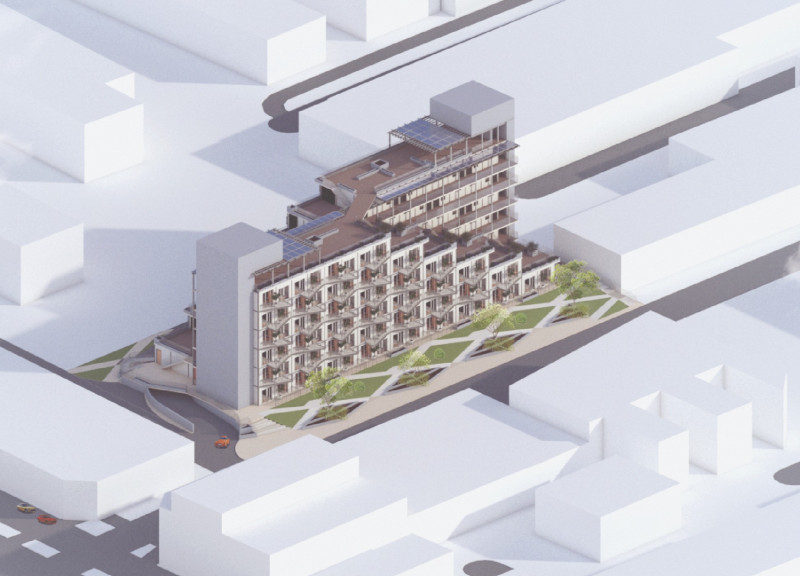5 key facts about this project
The Origo architectural system is set in an urban environment, designed to meet the needs of sustainable living. The main focus is a prototype that allows flexible unit arrangements, promoting various living situations while ensuring efficient use of the site. The overall design integrates nature into the built environment, aiming to enhance the well-being of future residents.
SUSTAINABLE SITE PLANNING
The Origo system takes a thoughtful approach to site planning, prioritizing the use of setbacks and open space. This creates a green belt that surrounds the building. The design incorporates a vertical green system on the facade, which supports local biodiversity and positively affects the surrounding microclimate.
FLEXIBLE UNIT CONFIGURATIONS
Flexibility is a core aspect of the Origo prototype. It enables multiple unit configurations and placements, catering to different lifestyle needs. The design allows for units to be extended laterally, which enhances sunlight and airflow, making for more comfortable living conditions.
STRUCTURAL INTEGRATION
The project incorporates stacking capabilities, particularly for mid-rise buildings that reach heights of 5 to 6 stories. This self-stacking feature simplifies construction. For taller buildings, an open system strategy is employed. Step-back designs allow natural light to reach deeper into living areas, resulting in terraces that serve as rooftop gardens, offering green spaces for residents.
COMMUNITY ENGAGEMENT
Terraces are crafted to create shaded outdoor areas that encourage interaction among residents. The design includes both horizontal and vertical circulation paths that improve connectivity within the building. This layout promotes social gatherings, fostering a sense of community in an urban landscape.
Interiors feature a modular design that includes versatile shelving, allowing spaces to be personalized. These elements can function as seating or storage, emphasizing the project's focus on user-friendly design while enhancing everyday living.






















































